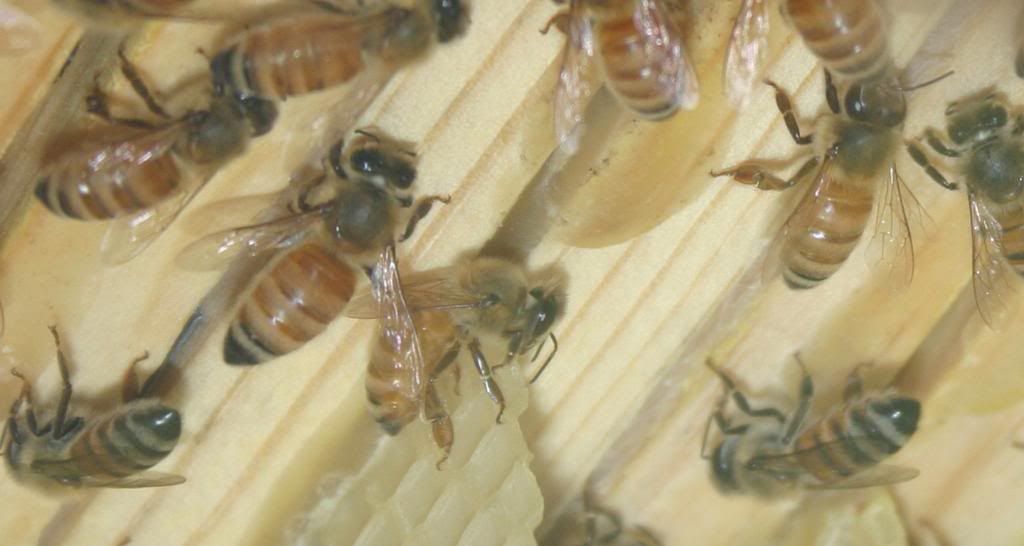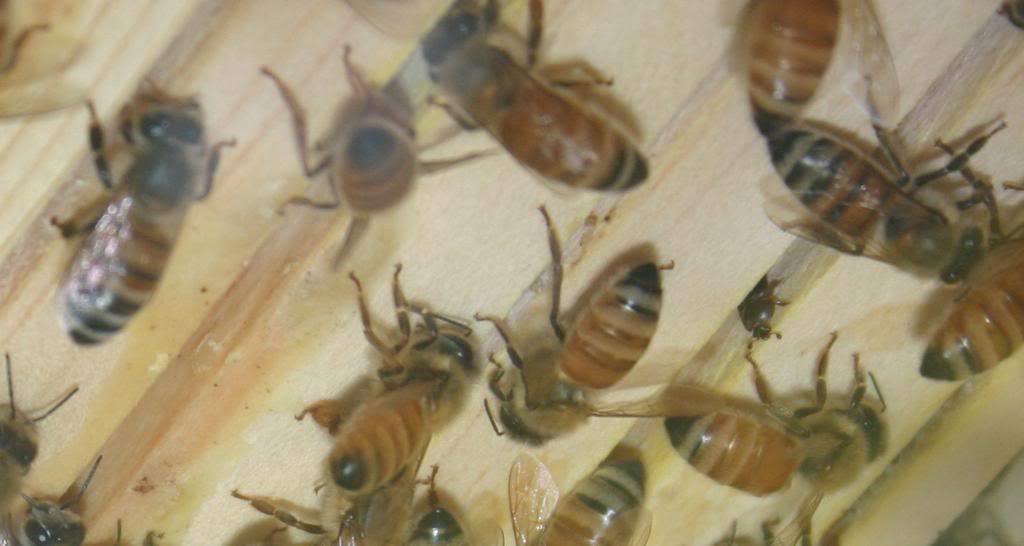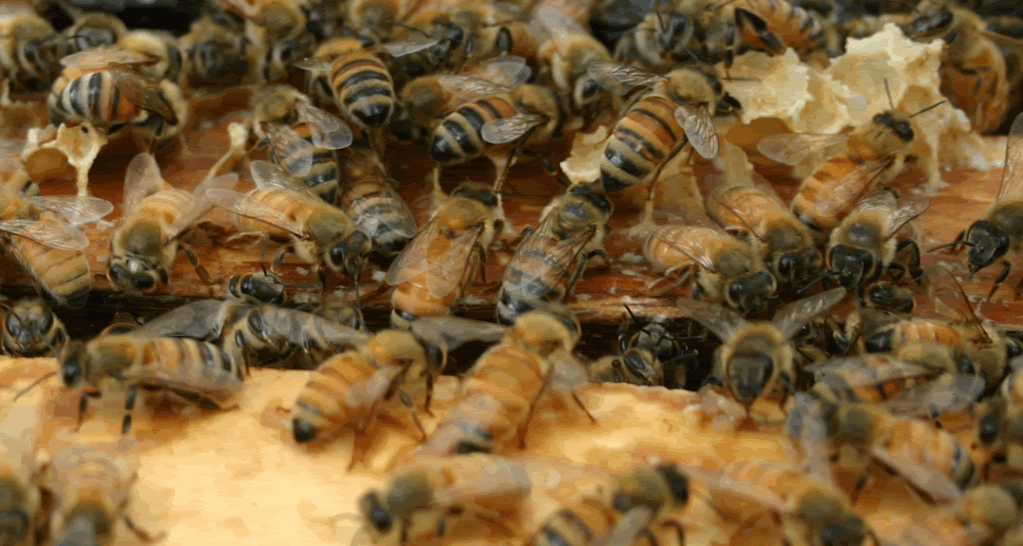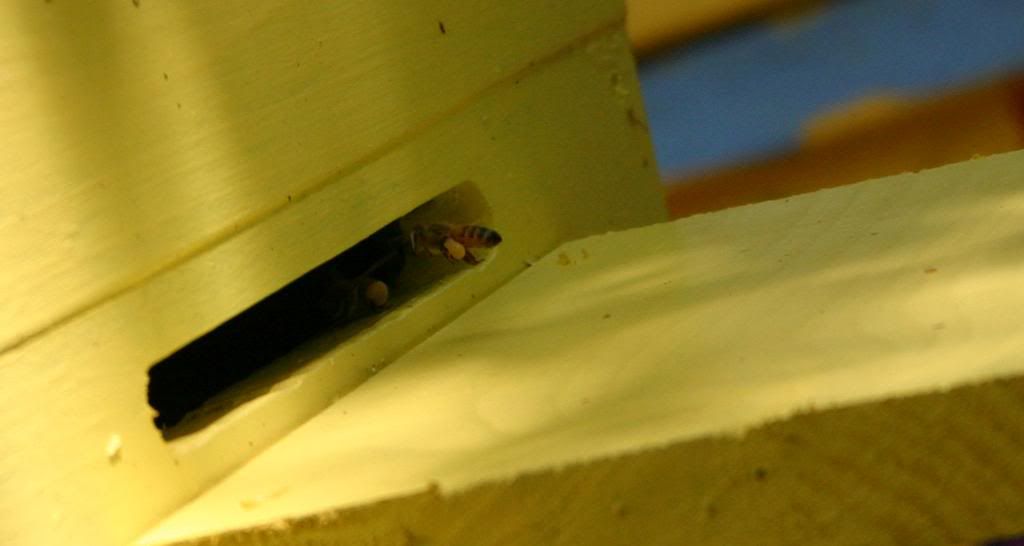 When I arrived home from work today I had a message from the Post Office. It said they had bees for me that have been there for 3 days and they were worried if they weren’t picked up soon they wouldn’t make it. THEN WHY DIDN’T they call the day they arrived!!!!!!!!!!!!!!! Oh well, my only guess is that with everyone fearful of the packages, they put it out of the way and it was forgotten. This is how two 3 pound packages are shipped via the Post Office.
When I arrived home from work today I had a message from the Post Office. It said they had bees for me that have been there for 3 days and they were worried if they weren’t picked up soon they wouldn’t make it. THEN WHY DIDN’T they call the day they arrived!!!!!!!!!!!!!!! Oh well, my only guess is that with everyone fearful of the packages, they put it out of the way and it was forgotten. This is how two 3 pound packages are shipped via the Post Office.
 I was not expecting the packages for at least another week. I was going to spend the upcoming weekend getting ready for them. Well, scratch that, instead I get to show how to improvise for one of the packages.
I was not expecting the packages for at least another week. I was going to spend the upcoming weekend getting ready for them. Well, scratch that, instead I get to show how to improvise for one of the packages.  Both queens arrived in good health, but one of the packages had a lot of dead bees in it. The stronger package went into the deep body that about a month ago I set up to use as a bait hive.
Both queens arrived in good health, but one of the packages had a lot of dead bees in it. The stronger package went into the deep body that about a month ago I set up to use as a bait hive. The stronger package went into the ten frame hive above. It was the weaker package that I wasn’t ready for. The NUC I built is still tied up over the Top Bar Hive. The supplies I had in my bee shed consists of two medium suppers and a supper for the NUC. I decided that the mediums would be too big for such a weak package, so my only other option was to convert the NUC’s supper into a mini NUC. Why? Well, if my main hive has not been able to re-queen itself, I can take the mini NUC and insert it into that hive to re-queen it.
The stronger package went into the ten frame hive above. It was the weaker package that I wasn’t ready for. The NUC I built is still tied up over the Top Bar Hive. The supplies I had in my bee shed consists of two medium suppers and a supper for the NUC. I decided that the mediums would be too big for such a weak package, so my only other option was to convert the NUC’s supper into a mini NUC. Why? Well, if my main hive has not been able to re-queen itself, I can take the mini NUC and insert it into that hive to re-queen it.
First I had to put all the components together. I took the Nuc’s supper and drilled a hole for an entrance. I improvised a top that I never even got around to painting. For a base I took out my old Beemax base. Now I have a mini NUC. 
 First apply some glue and put the frames together.
First apply some glue and put the frames together.  Then square them out and use the nail gun to put them together permanently.
Then square them out and use the nail gun to put them together permanently.  Just one of the frames has a wax foundation installed on it.
Just one of the frames has a wax foundation installed on it.
First, separate the packages and pry the lid covering the syrup can off.

 The tab coming up out of the box holds the queen cage. Hold on to it unless you wish to stick your hand into a box of bees to retrieve the queen’s cage.
The tab coming up out of the box holds the queen cage. Hold on to it unless you wish to stick your hand into a box of bees to retrieve the queen’s cage.  Spray the bees with sugar water (1:1) .
Spray the bees with sugar water (1:1) .  Gently tap the box on the ground a couple of times to drop all the bees to the bottom.
Gently tap the box on the ground a couple of times to drop all the bees to the bottom.  Using the hive tool, lift the can of syrup enough to grab on to it.
Using the hive tool, lift the can of syrup enough to grab on to it.  Lift it out, remove the queen’s cage, and use the lid to cover the hole.
Lift it out, remove the queen’s cage, and use the lid to cover the hole.On the queen’s cage…… remove the cork on the side of the cage that holds the candy. Punch a hole (nail or pocket knife) in the candy to make sure it has not dried out. Place the cage between two middle frames.


 Dump some bees over the cage. No need to make sure they all come out, specially not the dead bees.
Dump some bees over the cage. No need to make sure they all come out, specially not the dead bees.  Having to remove dead bees is just something else the bees will have to do later.
Having to remove dead bees is just something else the bees will have to do later.
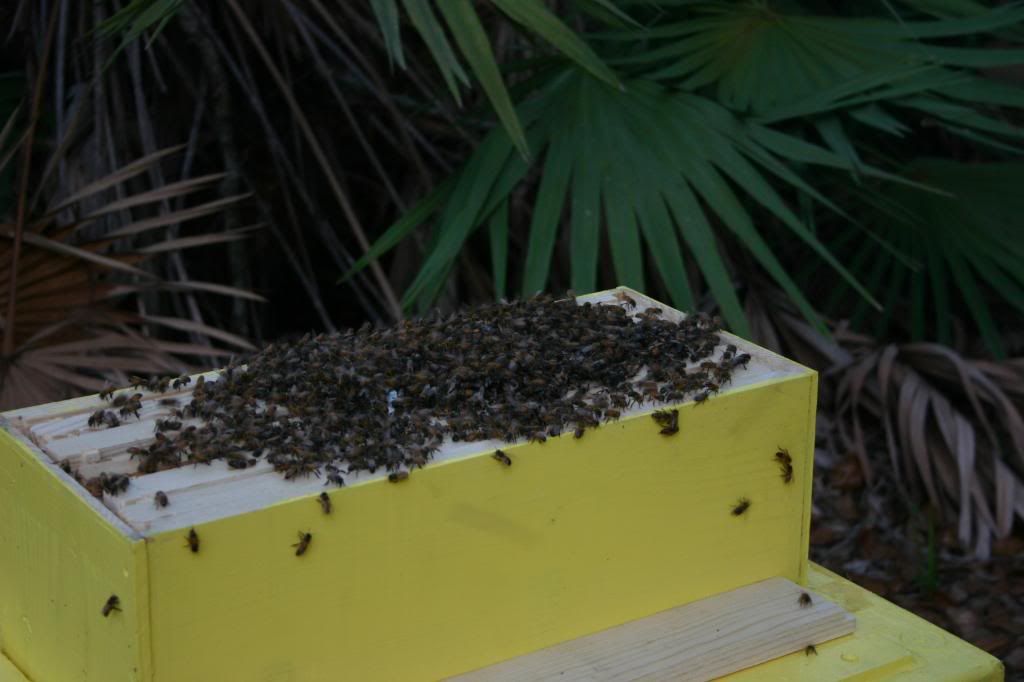 Leave the package close by, and the bees in the hive will call in the rest.
Leave the package close by, and the bees in the hive will call in the rest. Yes, it’s sitting on the bird bath. Did I mention I didn't even have a stand ?
Yes, it’s sitting on the bird bath. Did I mention I didn't even have a stand ?  Cover the hive, and wait 4 days to inspect to see if the queen was released.
Cover the hive, and wait 4 days to inspect to see if the queen was released. 


